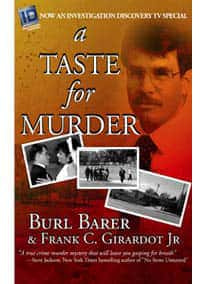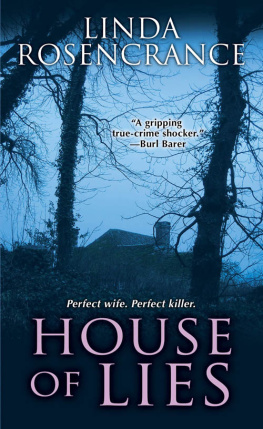
R. Barri Flowers is an independent literary criminologist and crime writer, with a bachelor of arts degree and a master of science degree in criminal justice from Michigan State University's renowned School of Criminal Justice. He is the author of more than sixty books, including the bestselling true-crime tale The Sex Slave Murders: The True Story of Serial Killers Gerald and Charlene Gallego, Prostitution in the Digital Age: Selling Sex from the Suite to the Street, and Mass Murder in the Sky: The Bombing of Flight 629.


I n the latter part of the 1970s, Michigan's Big Ten school Michigan State University (MSU) in East Lansing was the place to be for higher education, athletics, sexual experimentation, keggers, smoking pot, and expressing oneself. The school had a well-deserved reputation for partying. And MSU in the 1970s also turned out to be the place and time for a brutal serial killer to emerge, one who would take aim at young women, sexually assaulting them before violently ending their lives.
Donald Miller was not just another serial killer. The twenty-four-year-old graduate of MSU's renowned School of Criminal Justice once seemed to be on track for a totally different connection with the criminal justice system. But at some point, destiny took a deadly turn, and Miller achieved the distinction of becoming East Lansing's and MSU's only known serial killera distinction the community would prefer to forget. But Miller left a mark that seemingly makes such a thing impossible in the halls of academia and the surrounding area.

Michigan State University's School of Criminal Justice, founded in 1935, is the country's oldest continuous program for granting degrees in criminal justice. Originally known as the School of Public Administration and Public Safety, it followed the land-grant philosophy established by Michigan State Agricultural College. This philosophy is derived from the Morrill Act, signed in 1862 by President Abraham Lincoln to provide a generous grant of land to each state, the revenue of which was to be used for the development and support of agriculture schools.
Within this context, the land-grant institution became the first college in the nation to offer a bachelor of science degree in police administration, the intent being to use scientific education and training to properly prepare students for careers in law enforcement, in private investigation, and in other areas of criminal justice.
By 1977, MSU's School of Criminal Justice had presented undergraduate and graduate degrees to thousands of students under the direction and tutelage of such criminal justice and criminology legends as Donald Bremer, Arthur Brandstatter, Ralph Turner, Robert Scott, Louis Radelet, Zolton Ferency, Leon Weaver, Vincent Hoffman, and Robert Trojanowicz, among others.
Donald Miller was among those graduates to receive a degree in criminal justice from Michigan State. But rather than use it to pursue a career in law enforcement, government, or perhaps teaching, he took a decidedly different and dark path, turning into a psychopath, rapist, and serial killer.

Born on December 28, 1954, Donald Gene Miller was described as the quintessential boy-next-door. Having grown up in a peaceful, middle-class area in the college town of East Lansing, Michigan, during the rebellious 1970s, it would have been quite easy for him to have gotten caught up in the type of crowd among which long hair, drug use, and sowing one's oats was fairly common. Instead, by all accounts, Miller walked the straight and narrow, respected his elders, kept his hair short, and was a youth minister at the local church. He attended Michigan State University, majoring in criminal justice. It seemed like he was well on his way toward finding a successful career in law enforcement or some other impressive occupation within the world of law and order.
Adding to this picture of apparent perfection, Miller had started dating a girl from his church, Martha Sue Young, who lived down the street and was friends with Miller's older sister. By the winter of 1976, Miller, twenty-one, and nineteen-year-old Young, who also attended Michigan State, were engaged. The couple seemed to be headed toward matrimony and a good life as two bright students in love with life and each other.
But that all changed rather abruptly. Just before New Year's Eve 1976, Young called off the engagement. According to her mother, Sue Young, there were a number of reasons her daughter did not go through with the marriage, such as the fact that Don was twenty[-two] years old and never had a job, apart from a brief stint working in a resort community the previous summer.
The two also differed in their attitudes about education. Whereas Young loved college and was serious about studying and getting good grades, Miller felt just the opposite. Don never studies, and his grades aren't good, Martha told her mother. Sue Young noted that her daughter enjoyed athletics and socializing in college but complained that it's not only that [Don] doesn't, but he doesn't want me to either.
Whatever the reasons, or combination thereof, for breaking off their engagement, an embittered Miller had no intention of fading into the woodwork as Young sought greener pastures. Miller was able to convince her that they should remain friends at the very least, insisting that she keep the engagement ring, no strings attached with regard to the promise of future romance.
Young, who may have been wary of such an offer, chose to give her exfianc the benefit of the doubt and maintain the friendship. Based on Miller's clean record with the law, on their being members of the same church, and on the strong camaraderie between their families, it seemed there was no harm in giving Miller at least this much.
But Young could not read Miller's devious mind. Nor did she realize that he was anything but a safe betnot until it was too late to change the dark destiny in store for her.

New Year's Day 1977 marked the start of the winter term at Michigan State University, with students streaming back on to the campus from Christmas break, prepared to resume their march toward fulfilling necessary requirements for degrees. Then, of course, there was catching up with old friends, making new ones, and partyingboth to welcome in the New Year and simply for the sake of keeping up with campus traditions.
It was on that cold day that Martha Sue Young went missing. East Lansing police officer Kenneth Ouellette had just begun his shift when the call came in. It was from Gene Miller, Donald's father. Ouellette knew the Millers because he and Donald had sometimes gone to a local sportsman and rifle club together.
Gene Miller was calling the station at the request of Sue Young, Martha's mother. The young woman was missing after allegedly being dropped off at her home by Donald a few hours earlier, having gone out with him as friends.
Ouellette went to Young's house, initially believing there was probably nothing to worry about. Typically, most of these things turn out to be that they stayed at a friend's house or their date's house, the officer suggested. It's that college-town type of thing you associate with it.
Next page
















